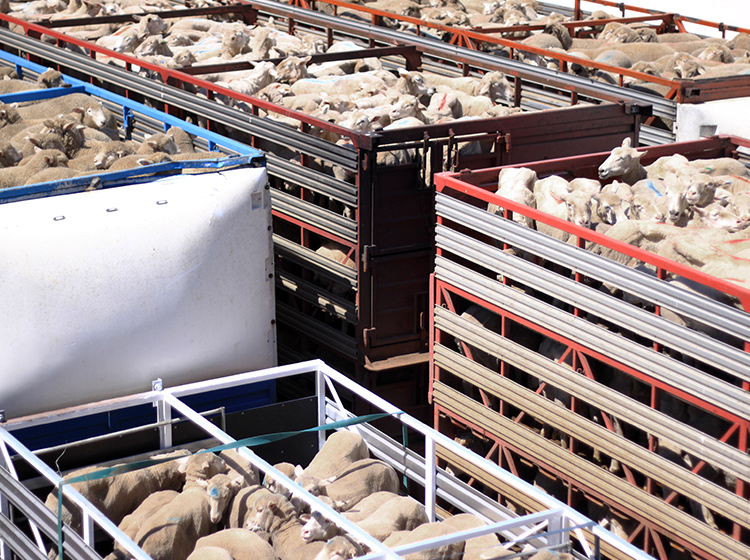CSIRO's Transport Network Strategic Investment Tool (TraNSIT) is reducing costs for Australia’s agricultural industry supply chain through analysis of transport and logistics options. Principal research scientist at CSIRO, Dr Andrew Higgins, explains how the tool is changing the transport industry.
The agricultural supply chain challenge
Australia’s agricultural industry supply chain is characterised by long distances, from production through to processing, ports or markets. For many industries, such as livestock and tropical fruit, it can be more than 2000 kilometres from farm to consumer or abattoir.
There is also significant vulnerability to climatic influences. This results in highly variable production levels from year to year, or supply chain disruption due to weather events causing flooding and damaged road surfaces.

The data-driven solution
CSIRO developed the TraNSIT logistics tool to provide a holistic view of how infrastructure investments, planning or regulatory changes might help the livestock industry supply chain by reducing costs and increasing resilience to disruption.
Designed originally for livestock, TraNSIT now incorporates agriculture, horticulture and forestry. It tracks the movement of every industry vehicle or rail trip in Australia, from farm through processor, feedlot and grain storage facility, right to domestic resellers and export ports.
The system now contains the largest dataset ever assembled for agricultural transport in Australia, with about 250,000 enterprises and 400,000 different supply chain paths. For each of those paths, TraNSIT maps out the optimal route by vehicle or rail, allowing us to look at the volumes of traffic on each road segment across the whole country.
We are then able to query the effects of upgrading certain roads, creating bypasses or investing in specific infrastructure. We can ask how an upgrade might reduce the cost of transport, or change the routes that drivers take.
Informing all levels
TraNSIT can be used to inform investment or other decisions for numerous stakeholders, up to the highest level. It was recently applied to the Federal Government’s Northern Australia Beef Roads Programme, which had $100 million to invest in roads across Queensland, the Northern Territory and Western Australia.
There were 60 submissions, at a total cost of $4 billion, ranging from new bridges to sealing or widening roads to enable access for higher-productivity vehicles. TraNSIT was crucial in helping the government prioritise its investment to maximise benefit.
At a regional level, councils are beginning to use the tool to look at bottlenecks on their roads, working to improve supply chains through local areas. Individual industries have also shown interest in how they can improve their own efficiencies, independently of other issues.
What’s more, it collates other related costs such as driver fatigue, animal shrinkage and impact on food quality.
On a wider scale, the TraNSIT model will be being adapted to investigate the resilience of road networks against rain and flood hazards. It is expected that the impact will go beyond improved transport costs across all supply industries, to the greater economic benefits of having more reliable access to suppliers and markets.
Viva Energy’s take
Although the tool does not look directly at the supply chain challenges in the hydrocarbon industry, it can provide value, says Felix Ohle, Business Manager Logistics, Viva Energy Australia. The potential constraints or bottlenecks and measures for remedy it looks at are very similar, he says.
The tool could also provide insights and opportunities for greater alignment nationally on national heavy vehicle regulations.
"Many of our customers are striving for greater productivity within their industries and businesses," Ohle adds. "A more methodical approach that can be deployed on micro and macro level feels like a good vehicle to test current assumptions."
Interested in learning about Viva Energy’s products and services?
Find out more